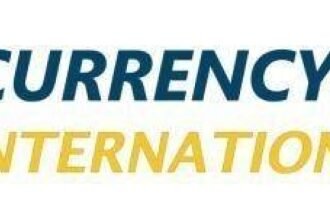Navigating the world of international investments can be daunting, especially with currency fluctuations posing a constant threat. Currency hedging emerges as a powerful tool to protect your investments. By locking in exchange rates, you can shield your portfolio from volatile swings, ensuring more predictable returns and safeguarding your profits. Ready to explore how hedging can secure your global investments? If you wish to learn about investing with education companies, you might consider visiting an investment education firm online.
Mitigating exchange rate volatility
Exchange rates can swing wildly, affecting your investments. How can you guard against this? Currency hedging is a practical method. It locks in exchange rates, reducing uncertainty. Imagine you’ve invested in a foreign stock. If the local currency drops, your investment value could plummet. By hedging, you set a rate in advance. This move shields you from potential losses due to currency changes.
There are several hedging tools available. Forward contracts let you agree on an exchange rate today for a transaction in the future. This approach ensures you know exactly what you’ll get, regardless of market fluctuations. Another option is using currency futures.
These standardized contracts are traded on exchanges, providing a regulated way to hedge. Options and swaps offer more flexibility, allowing you to benefit from favorable rate movements while protecting against adverse ones.
Investors often find it helpful to look at real-world examples. Consider a U.S. company importing goods from Europe. By entering into a forward contract, they lock in a euro-dollar rate.
This step means that even if the euro strengthens, their costs stay predictable. On the flip side, if the euro weakens, they miss out on potential savings, but the stability often outweighs this downside.
Enhancing investment predictability
Predictability in investments is gold. When dealing with international investments, currency shifts add layers of uncertainty. Currency hedging can bring predictability, ensuring steadier returns.
Consider an investor with holdings in Japan. If the yen’s value fluctuates, so does the investment’s return. By hedging, you can stabilize the expected outcomes. Forward contracts, as mentioned before, are a reliable tool. They fix the exchange rate, removing guesswork from the equation. You know what you’ll get when you convert your earnings back to your home currency.
Currency futures also play a vital role here. These contracts are like forward contracts but traded on an exchange. This exchange-traded nature adds an extra layer of security and transparency. Options provide another avenue. They allow you to hedge against unfavorable movements while retaining the potential benefits of favorable ones.
Real-world applications of these strategies abound. Think of a pension fund investing in European assets. They need stable returns to meet future obligations. By hedging their currency exposure, they ensure that their projections remain on track. This practice helps in making reliable financial plans.
Engaging with a financial expert can make a big difference. They can guide you through the various hedging instruments and help tailor a strategy that aligns with your objectives.
The goal is clear: reduce uncertainty and make your investment outcomes more predictable. This approach helps you focus on the core performance of your assets, without the distraction of currency movements.
Protecting profit margins and reducing risk
Protecting profit margins is vital for any business with international exposure. Currency fluctuations can eat into profits, but hedging offers a shield. It’s about making sure that currency movements don’t erode your hard-earned gains.
Imagine a U.S. exporter selling goods to Europe. If the euro weakens against the dollar, the revenue in dollars decreases. By using forward contracts, the company locks in a favorable exchange rate. This strategy ensures that the expected revenue remains stable, safeguarding profit margins.
Currency swaps can also be beneficial. They allow businesses to exchange cash flows in different currencies, matching their income with their expenses.
This matching process reduces the impact of currency fluctuations on the bottom line. Options provide another layer of protection. They offer the flexibility to capitalize on favorable rate movements while guarding against adverse shifts.
Let’s look at a multinational corporation. They have revenues and expenses in multiple currencies. By employing a mix of forward contracts, swaps, and options, they can manage their overall currency exposure. This comprehensive approach helps in maintaining stable profit margins across their global operations.
Do you wonder how to apply these strategies effectively? Start by assessing your currency exposure. Identify where the risks lie and how significant they are. Then, choose the appropriate hedging instruments. Working with a financial advisor can provide valuable insights tailored to your situation.
Conclusion
Currency hedging isn’t just a strategy; it’s a lifeline for international investors. By reducing the impact of exchange rate volatility, you can protect your profits and ensure steady returns. Whether you’re using forward contracts, futures, or options, hedging provides the security you need in a fluctuating market. Stay ahead in the global arena by making hedging an integral part of your investment strategy.
The above information does not constitute any form of advice or recommendation by London Loves Business and is not intended to be relied upon by users in making (or refraining from making) any finance decisions. Appropriate independent advice should be obtained before making any such decision. London Loves Business bears no responsibility for any gains or losses.





















